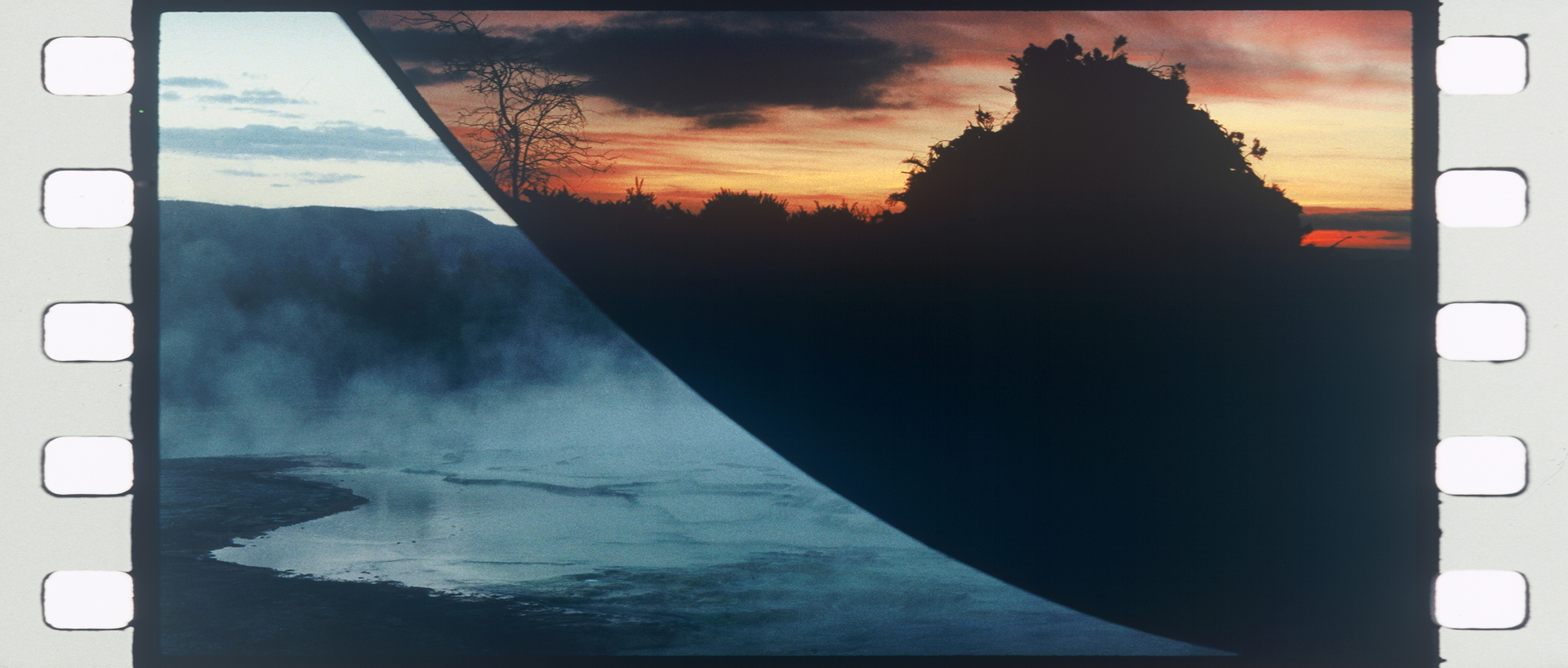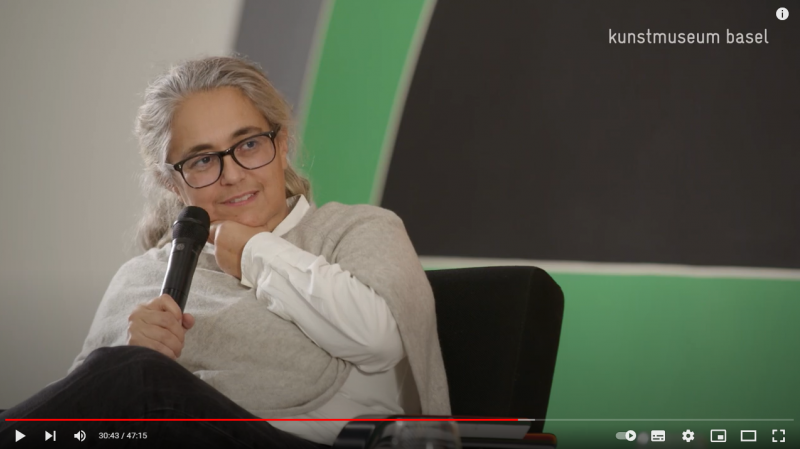Tacita Dean
Antigone
Kunstmuseum Basel | Gegenwart hosts the Swiss premiere of Antigone (2018), Tacita Dean’s (b. 1965) most complex work to date. The presentation of the hourlong, anamorphic 35mm film is contextualized by other films, photographs, photogravures, and chalk drawings of the British-European artist.
Antigone revolves around the name ‘Antigone’ and how it resonates, not only in Greek literary history, but also in the artist’s own life. Antigone is the name of Dean’s older sister so was one of the first words the artist ever learnt. ‘Antigone’ is also the eponymous heroine in the Theban trilogy of plays by the Greek tragedian Sophocles, which led Dean to intertwine her own story with the mythological cosmic order of classical antiquity.
The central concern in Antigone is blindness: the artist’s own willed blindness—Dean always gives accident a role in the genesis of her work and leaves room for unexpected developments; technical invisibility—her masking and multiple exposure of the negative at different times and in different places meant she would not see her composition until after it was printed in the lab; the unseeingness of King Oedipus, who, confronted with the outrages he had unwittingly committed, pierced his own eyes and banished himself from Thebes; and, finally, the blindness of nature: the mainspring that propels Antigone’s rhythm and structure is a solar eclipse that Dean shot in Wyoming. The double projection intertwines these thematic threads in a dramaturgy whose unities of place, time, and action are prismatically fractured, yielding a panoply of radiant images.
The artist has dedicated herself in the last decade to reusing some of the early visionary techniques of filmmaking that created cinema as we know it and reworking them as a powerful argument for the medium in the 21st century, a pursuit that culminated in the monumental installation FILM in the Turbine Hall at London’s Tate Modern in 2011. Her extraordinary command of these practices has led critics to hail her as a “Celluloid Hero.” At the same time, Dean has initiated a movement to raise awareness of the special nature of analogue film and to campaign for its preservation and continued availability. Sadly, the future of 16mm and 35mm film material is continually under threat.
The screening of Antigone is complemented by a small collection of works by Dean that closely relate to this film, as well as a recent large-scale blackboard drawing, Chalk Fall (2018) and slate works, which include a recent drawing, Cynthia Teeming—Cynthia being a full moon—taken from a line in Metaphysical poet Andrew Marvell’s poem, Eyes and Tears.
The exhibition continues with an installation of a group of short 16mm films shown together for the first time: Ear on a Worm (2017) was made in relation to Leonard Cohen’s song Bird on a Wire. Driving around Los Angeles, Dean often started to incant the song’s opening lines when seeing birds sitting on the multitude of telegraph wires that straddle the city. The challenge was to film a bird for the full 3 minutes and 28 seconds length of the song. A Cloud makes itself (2020) watches a cloud form and un-form in the deep azure of an LA sky and Providence (2018) is a silent duet between actor David Warner and hummingbirds. And showing for the first time is a new series of hand-drawn lithographs called LA Magic Hour (2019-2021) produced with print publishers Gemini GEL.
Like many other works by the artist, Antigone is in the collection of the Emanuel Hoffmann Foundation. With a running time of exactly one hour, the work is presented as a continuous projection, synchronized so that the film will automatically restart every hour. It is advised in order to fully appreciate the emotional trajectory of the film that it should be watched from beginning to end.
Screening times daily at 11 and 12am, 1, 2, 3, 4 and 5pm
The exhibition is sponsored by:
- Laurenz-Stiftung Basel
- Fonds für künstlerische Aktivitäten im Museum für Gegenwartskunst der Emanuel Hoffmann-Stiftung und Christoph Merian Stiftung


